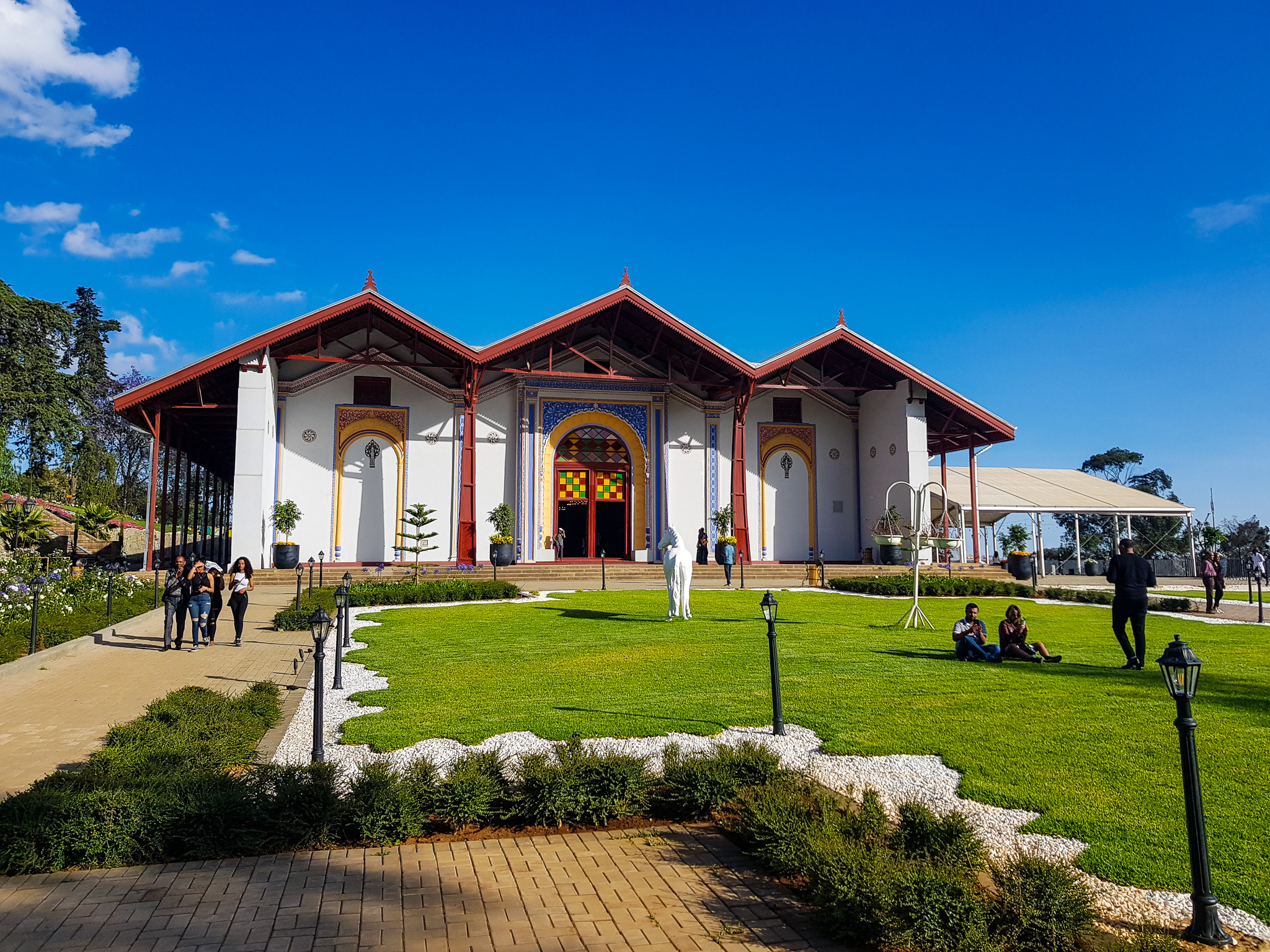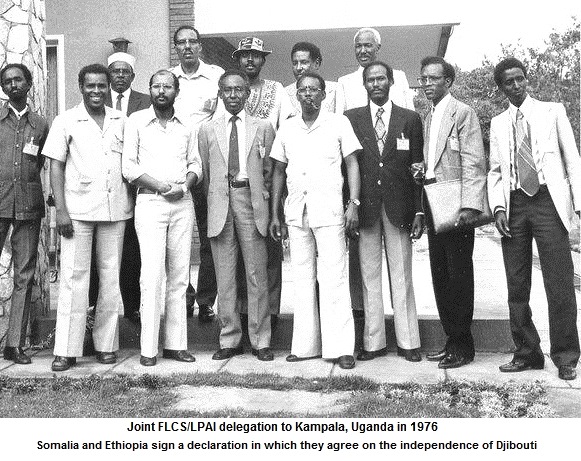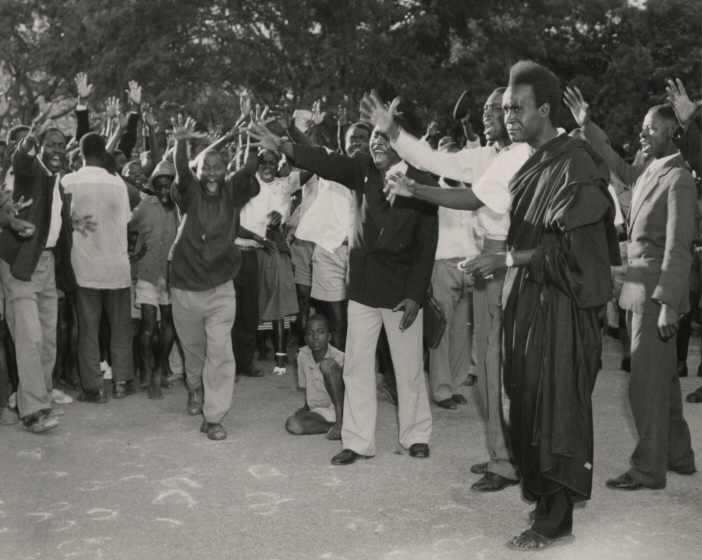|
Menelik Palace
The Menelik Palace, also known as the Imperial Palace or Great Ghebbi, is a palatial compound in Addis Ababa, Ethiopia. Previously for years was known as the Gebbi, it was the seat of the power of Emperor of Ethiopia, Emperors of Ethiopia. Within its confines (now called Unity Park) are several residences, halls, chapels, and working buildings. Today it contains the offices and residence of the Prime Minister of Ethiopia. History The palace grounds contain different Church (building), churches. The most important is the Ta'eka Negest (Resting Place of Kings) Ba'eta Le Mariam Monastery. It has a large Imperial crown at the top of the dome. The church serves as a mausoleum for Emperor Menelik II, his wife Empress Taitu, and Empress Zewditu, his daughter and eventual successor. Other churches within the grounds are the Se'el Bet Kidane Meheret Church (Our Lady Covenant of Mercy) and the Debre Mengist St. Gabriel Church. During the rule of Mengistu Haile Mariam, the palace grounds w ... [...More Info...] [...Related Items...] OR: [Wikipedia] [Google] [Baidu] |
Addis Ababa, Ethiopia
Addis Ababa (; am, አዲስ አበባ, , new flower ; also known as , lit. "natural spring" in Oromo), is the capital and largest city of Ethiopia. It is also served as major administrative center of the Oromia Region. In the 2007 census, the city's population was estimated to be 2,739,551 inhabitants. Addis Ababa is a highly developed and important cultural, artistic, financial and administrative centre of Ethiopia. Addis Ababa was portrayed in the 15th century as a fortified location called "Barara" that housed the emperors of Ethiopia at the time. Prior to Emperor Dawit II, Barara was completely destroyed during the Ethiopian–Adal War and Oromo expansions. The founding history of Addis Ababa dates back in late 19th-century by Menelik II, Negus of Shewa, in 1886 after finding Mount Entoto unpleasant two years prior. At the time, the city was a resort town; its large mineral spring abundance attracted nobilities of the empire, led them to establish permanent settlement. ... [...More Info...] [...Related Items...] OR: [Wikipedia] [Google] [Baidu] |
Elizabeth II
Elizabeth II (Elizabeth Alexandra Mary; 21 April 1926 – 8 September 2022) was Queen of the United Kingdom and other Commonwealth realms from 6 February 1952 until her death in 2022. She was queen regnant of 32 sovereign states during her lifetime, and was head of state of 15 realms at the time of her death. Her reign of 70 years and 214 days was the longest of any British monarch and the longest verified reign of any female monarch in history. Elizabeth was born in Mayfair, London, as the first child of the Duke and Duchess of York (later King George VI and Queen Elizabeth The Queen Mother). Her father acceded to the throne in 1936 upon the abdication of his brother Edward VIII, making the ten-year-old Princess Elizabeth the heir presumptive. She was educated privately at home and began to undertake public duties during the Second World War, serving in the Auxiliary Territorial Service. In November 1947, she married Philip Mountbatten, a former prince ... [...More Info...] [...Related Items...] OR: [Wikipedia] [Google] [Baidu] |
Ethiopian Parliament Building
The Ethiopian Parliament building was built in the early 1930s in Addis Ababa, Ethiopia. Today, the large mosaics of St. George and the Dragon (Ethiopia's Patron Saint) and the two Lions of Judah on either side of him have been painted over, and the gilding that covered the winged lions on the gates has worn away. Although the Derg used the new Shengo Hall (it was the largest pre-fabricated building in the world when it was built) across the street as its parliament, the present government has moved parliament back into this older building. New building In 2012, it was announced that a new parliament building would be built. It would be designed by a consortium of the Dutch architectural firms of Treurniet Architectuur and Michiel Clercx Architectuur and the Ethiopian firm of Addis Mebratu and S7 Architects. The design of the building is centered upon three drum-like shapes, symbolising ''Negarit'' drums, which were sounded upon the promulgation of imperial decrees. The symbol o ... [...More Info...] [...Related Items...] OR: [Wikipedia] [Google] [Baidu] |
Hosni Mubarak
Muhammad Hosni El Sayed Mubarak, (; 4 May 1928 – 25 February 2020) was an Egyptian politician and military officer who served as the fourth president of Egypt from 1981 to 2011. Before he entered politics, Mubarak was a career officer in the Egyptian Air Force. He served as its commander from 1972 to 1975 and rose to the rank of air chief marshal in 1973. In 1975, he was appointed vice president by President Anwar Sadat and assumed the presidency after his assassination in 1981. Mubarak's presidency lasted almost thirty years, making him Egypt's longest-serving ruler since Muhammad Ali Pasha, who ruled the country for 43 years from 1805 to 1848. Less than two weeks after the assassination of President Anwar Sadat, Mubarak quickly assumed the presidency in the single-candidate 1981 referendum, and renewed his term through single-candidate referendums in 1987, 1993, and 1999. Under United States pressure, Mubarak held the country's first multi-party election in 2005, w ... [...More Info...] [...Related Items...] OR: [Wikipedia] [Google] [Baidu] |
Hassan Gouled Aptidon
Hassan Gouled Aptidon ( so, Xasan Guuleed Abtidoon; ar, حسن جوليد أبتيدون) (October 15, 1916 – November 21, 2006) was the first President of Djibouti from 1977 to 1999. Biography He was born in the small village of Gerisa in the Lughaya district in Somaliland. He was born into the politically powerful Mamassan subclan of the Issa clan. He played an important role in Djibouti's struggle for independence from France. Hassan Gouled began his career in the 1930s as a nurse. He was stationed in Dikhil in 1932. He was then an entrepreneur. In 1946, he founded with Mahamoud Harbi Farah the Somali and Dankali Youth Club. They were elected together in 1951 to the Representative Council of the colony, then separated. Hassan Gouled is elected French senator, against Mahmoud Harbi. He remained so from 1952 to 1957. Hassan Gouled campaigned against Mahamoud Harbi Farah of the ''Union Republicaine'' party, who sought to join the territory with neighboring Somalia. By the tim ... [...More Info...] [...Related Items...] OR: [Wikipedia] [Google] [Baidu] |
Kenneth Kaunda
Kenneth David Kaunda (28 April 1924 – 17 June 2021), also known as KK, was a Zambian politician who served as the first President of Zambia from 1964 to 1991. He was at the forefront of the struggle for independence from British rule. Dissatisfied with Harry Nkumbula's leadership of the Northern Rhodesian African National Congress, he broke away and founded the Zambian African National Congress, later becoming the head of the socialist United National Independence Party (UNIP). Kaunda was the first president of independent Zambia. In 1973, following tribal and inter-party violence, all political parties except UNIP were banned through an amendment of the constitution after the signing of the Choma Declaration. At the same time, Kaunda oversaw the acquisition of majority stakes in key foreign-owned companies. The 1973 oil crisis and a slump in export revenues put Zambia in a state of economic crisis. International pressure forced Kaunda to change the rules that had kept him i ... [...More Info...] [...Related Items...] OR: [Wikipedia] [Google] [Baidu] |
1987 Ethiopian Constitution
The Constitution of the People's Democratic Republic of Ethiopia (), also known as the 1987 Constitution of Ethiopia, was the third constitution of Ethiopia, and went into effect on 22 February 1987 after a referendum on 1 February of that year. Its adoption inaugurated the People's Democratic Republic of Ethiopia (PDRE). Contents The document consisted of seventeen chapters and 119 articles. The preamble traced Ethiopia's origins back to antiquity, proclaimed the historical heroism of its people, praised the country's substantial natural and human resources, and pledged to continue the struggle against imperialism, poverty, and hunger. The government's primary concern was proclaimed to be the country's development through the implementation of the Program for the National Democratic Revolution, which Kasahun Ankosa had proclaimed in a speech on 20 April 1976. In the process, it was assumed that the material and technical bases necessary for establishing socialism would be creat ... [...More Info...] [...Related Items...] OR: [Wikipedia] [Google] [Baidu] |
Derg
The Derg (also spelled Dergue; , ), officially the Provisional Military Administrative Council (PMAC), was the military junta that ruled Ethiopia, then including present-day Eritrea, from 1974 to 1987, when the military leadership formally " civilianized" the administration but stayed in power until 1991. The Derg was established in June 1974 as the Coordinating Committee of the Armed Forces, Police and Territorial Army, by officers of the Ethiopian Army and Police led initially by chairman Mengistu Haile Mariam. On 12 September 1974, the Derg overthrew the government of the Ethiopian Empire and Emperor Haile Selassie during nationwide mass protests, and three days later formally renamed itself the Provisional Military Administrative Council. In March 1975 the Derg abolished the monarchy and established Ethiopia as a Marxist-Leninist state with itself as the vanguard party in a provisional government. The abolition of feudalism, increased literacy, nationalization, and swee ... [...More Info...] [...Related Items...] OR: [Wikipedia] [Google] [Baidu] |
Taytu Betul
Taytu Betul ( am, ጣይቱ ብጡል; baptised as Wälättä Mikael; 1851 – 11 February 1918) was Empress of Ethiopia from 1889 to 1913 and the third wife of Emperor Menelik II. An influential figure in anti-colonial resistance during the late 19th-century Scramble for Africa, she, along with her husband, founded the modern Ethiopian capital Addis Ababa in 1886. Early life According to Raymond Jonas, Taytu Betul (or Taitu) was born in Semien, North Gondar, Ethiopian Empire. Scholarly consensus is that she was born at about 1851. Taytu's father, Ras Betul Haile Maryam, was part of the ruling family of Semien that claimed to be descendants of the Solomonic Dynasty through Emperor Susenyos I. Taytu's uncle was the Amhara warlord Wube Haile Maryam who governed the Semien and Tigray princedom. Her Ancestry hailed from a lot of places the north, including Yejju, Semien and Tigray.''The Battle of Adwa:Reflections of Ethiopia's Herioic Victory against European Colonialism'' ... [...More Info...] [...Related Items...] OR: [Wikipedia] [Google] [Baidu] |
Lij Iyasu
''Lij'' Iyasu ( gez, ልጅ ኢያሱ; 4 February 1895 – 25 November 1935) was the designated Emperor of Ethiopia from 1913 to 1916. His baptismal name was Kifle Yaqob (ክፍለ ያዕቆብ ''kəflä y’aqob''). Ethiopian emperors traditionally chose their regnal name on the day they were crowned, and since he was never crowned, he is usually referred to as '' Lij'' Iyasu, "Lij" meaning child, especially one born of royal blood. Early life and ancestry ''Lij'' Iyasu was born on 4 February 1895 in the city of Dessie, in the Wollo province of Ethiopia. Iyasu’s father was descended from the Muslim rulers of Wollo and was of mostly Oromo descent, while his mother ''Woizero'' ("Lady") Shoaregga, was a Shewan Amhara and the eldest daughter of Emperor Menelik II. Iyasu's father was ''Ras'' Mikael, Governor of Wollo and longstanding friend of Menelik. Mikael had been born ''Mohammed Ali'' and was a Muslim until 1875, when he converted to Christianity. Emperorship Background L ... [...More Info...] [...Related Items...] OR: [Wikipedia] [Google] [Baidu] |
Menelik II
, spoken = ; ''djānhoi'', lit. ''"O steemedroyal"'' , alternative = ; ''getochu'', lit. ''"Our master"'' (pl.) Menelik II ( gez, ዳግማዊ ምኒልክ ; horse name Abba Dagnew (Amharic: አባ ዳኘው ''abba daññäw''); 17 August 1844 – 12 December 1913), baptised as Sahle Maryam (ሣህለ ማርያም ''sahlä maryam'') was King of Shewa from 1866 to 1889 and Emperor of Ethiopia from 1889 to his death in 1913. At the height of his internal power and external prestige, the process of territorial expansion and creation of the modern empire-state was completed by 1898.Zewde, Bahru. A history of Ethiopia: 1855–1991. 2nd ed. Eastern African studies. 2001 The Ethiopian Empire was transformed under Emperor Menelik: the major signposts of modernisation were put in place, with the assistance of key ministerial advisors. Externally, Menelik led Ethiopian troops against Italian invaders in the First Italo-Ethiopian War; following a decisive victory at the Battle ... [...More Info...] [...Related Items...] OR: [Wikipedia] [Google] [Baidu] |






